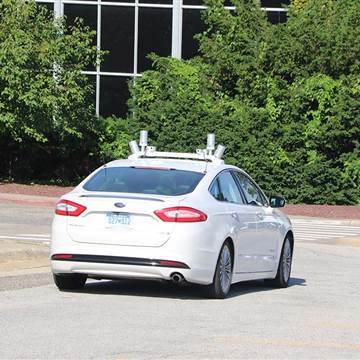A transportation revolution could be upon us.
“This is just the first step,” said U.S. Transportation Secretary Anthony Foxx, after the Department released the first-ever federal guidelines for autonomous and self-driving vehicles on Monday.
The new rules will cover the development, testing and eventual sales of self-driving vehicles, while also providing guidelines for state regulators.


What is particular significant is that the Department of Transportation, through the National Highway Traffic Safety Administration, is acting as much as anything as a proponent of smart car technology, rather than an anchor on autonomous vehicle technology.
Change of Culture
“This is a change of culture for us,” said Foxx, echoing comments made by NHTSA Administrator Mark Rosekind when he first announced plans to draft autonomous vehicle regulations. While both Foxx and Rosekind have stressed the need to ensure self-driving vehicles meet rigid quality and reliability standards, the two officials have sided with proponents of the technology, arguing that the age of autonomous cars could see a dramatic drop in highway crashes, injuries and fatalities.
For his part, Rosekind has repeatedly acknowledged that smart car technology is moving at lightning speed while even minor rulemaking programs can take years. Earlier this year, NHTSA formed a pair of unprecedented alliances with the auto industry aimed at bringing new safety systems to market without having to draft specific guidelines. One result: a promise by a score of manufacturers to make automatic emergency braking standard equipment over the next few years.
That is one of the building block technologies that will make it possible for cars to drive hands-free. And the industry is expected to roll out more and more of these so-called Advanced Driver Assistance Systems, or ADAS, between now and 2020.
Related: Department of Transportation Releases Policy on Driverless Vehicles
Several automakers hope to have fully autonomous vehicles ready around that time and, last month, Ford said it plans to have completely driverless vehicles in production by 2021. It initially intends to market those models to deliver and ride-sharing services, such as Lyft and Uber. The latter start-up is just beginning a test program around Pittsburgh where it will test the capabilities of a small fleet of autonomous Ford Fusion prototypes.
Transportation Revolution
Both of those ride-sharing services hope to eventually go completely driverless something that they believe will make it so cheap to hail a ride that many Americans will no longer bother to own a personal vehicle. In a blog post over the weekend, John Zimmer, Lyft’s president and co-founder, predicted we’re headed for a “third transportation revolution,” one as dramatic as those touched off by the creation of canals and railroads and, barely a century ago, the development of the moving assembly line.
“The good news is we don’t have to keep building our country around car ownership,” Zimmer wrote in a blog post over the weekend. Much the way you can stream music and videos, “you no longer need to own a product to enjoy its benefits,” suggested the 32-year-old entrepreneur. “Eventually we’ll look at owning a car in much the same way.”
Perhaps surprisingly, Zimmer isn’t the only one to foresee that brave new world. At a Ford technology summit last week, the maker’s CEO Mark Fields said he expects to see a decline in motor vehicle ownership in many mega-cities as transportation alternatives, such as ride-sharing, become more common.
“Ford appreciates Secretary Foxx’s leadership and NHTSA’s thoughtful efforts to advance the future of mobility and ensure the United States continues to drive transportation innovation,” Ford said in a prepared statement responding to the new federal guidelines on autonomous vehicles.
Some People Are Happier in the Slow Lane
Not everyone is quite so upbeat. A number of organizations, such as California-based Consumer Watchdog, have been asking regulators to slow things down. They cite the numerous, generally minor, crashes that have involved autonomous vehicle prototypes operated by Google, as well as the fatal, May 9 crash in Florida involving a Tesla Model S operating in semi-autonomous Autopilot mode.
DOT Sec. Foxx has made it clear that he isn’t writing a blank check to the industry. Automakers and tech companies must “take the safety aspects of this very seriously,” he stressed during a speech in San Francisco in July. “We want people who start a trip to finish it.”
But, with the publication of the new rules, Washington is dangling a bigger carrot and a smaller stick than has been its tradition. And it’s not only writing new rules but seeking cash to help promote this third transportation revolution. NHTSA is hoping to get $3.9 million in finding for development of smarter, cleaner cars over the next decade, though Congress has yet to authorize funding.
But even without that budget, the revolution appears to be approaching fast.



![[MWC 2025] Samsung’s Mobile Technology Leadership Shines](https://loginby.com/itnews/wp-content/uploads/2025/03/1741515476_MWC-2025-Samsung’s-Mobile-Technology-Leadership-Shines-238x178.jpg)



